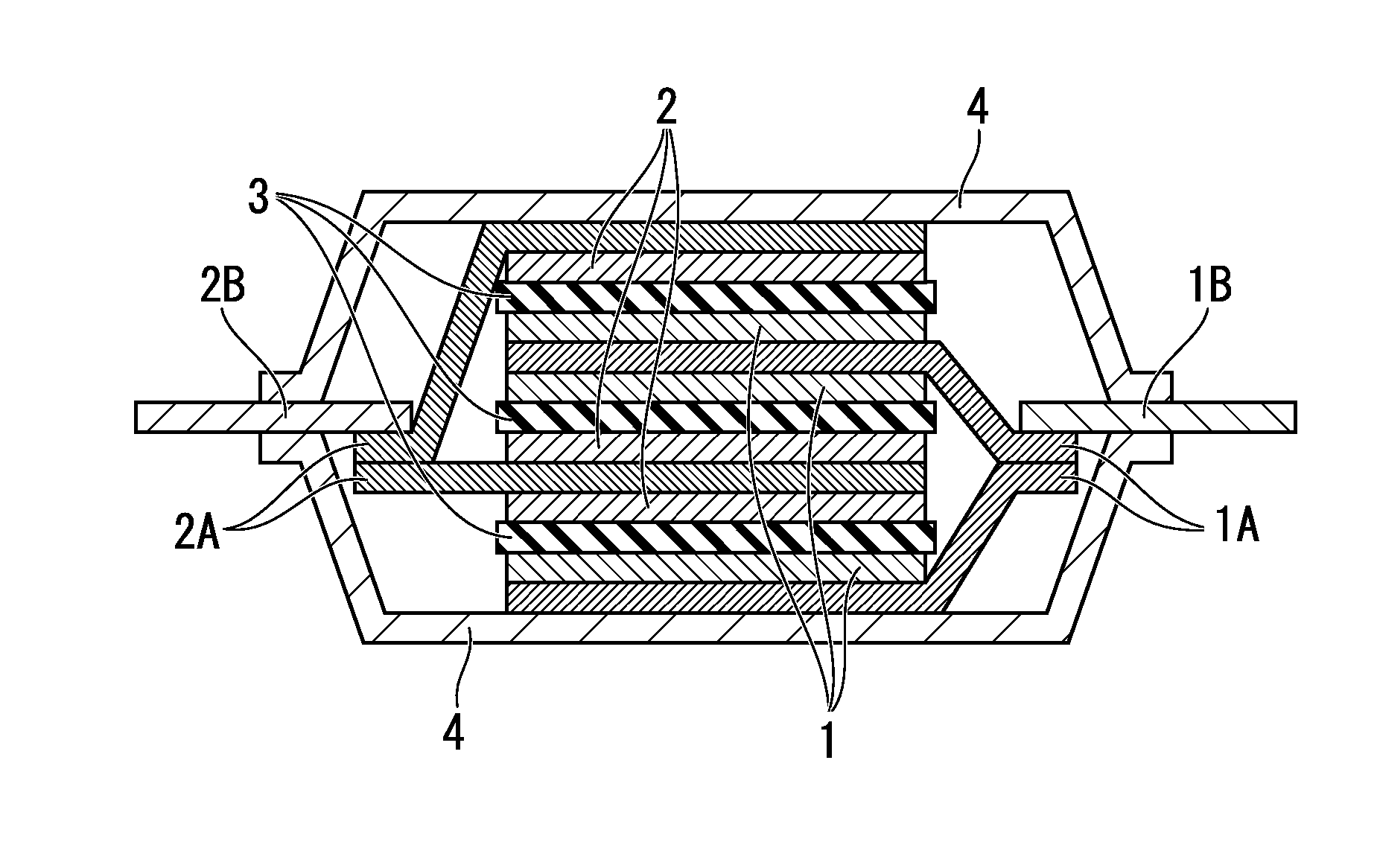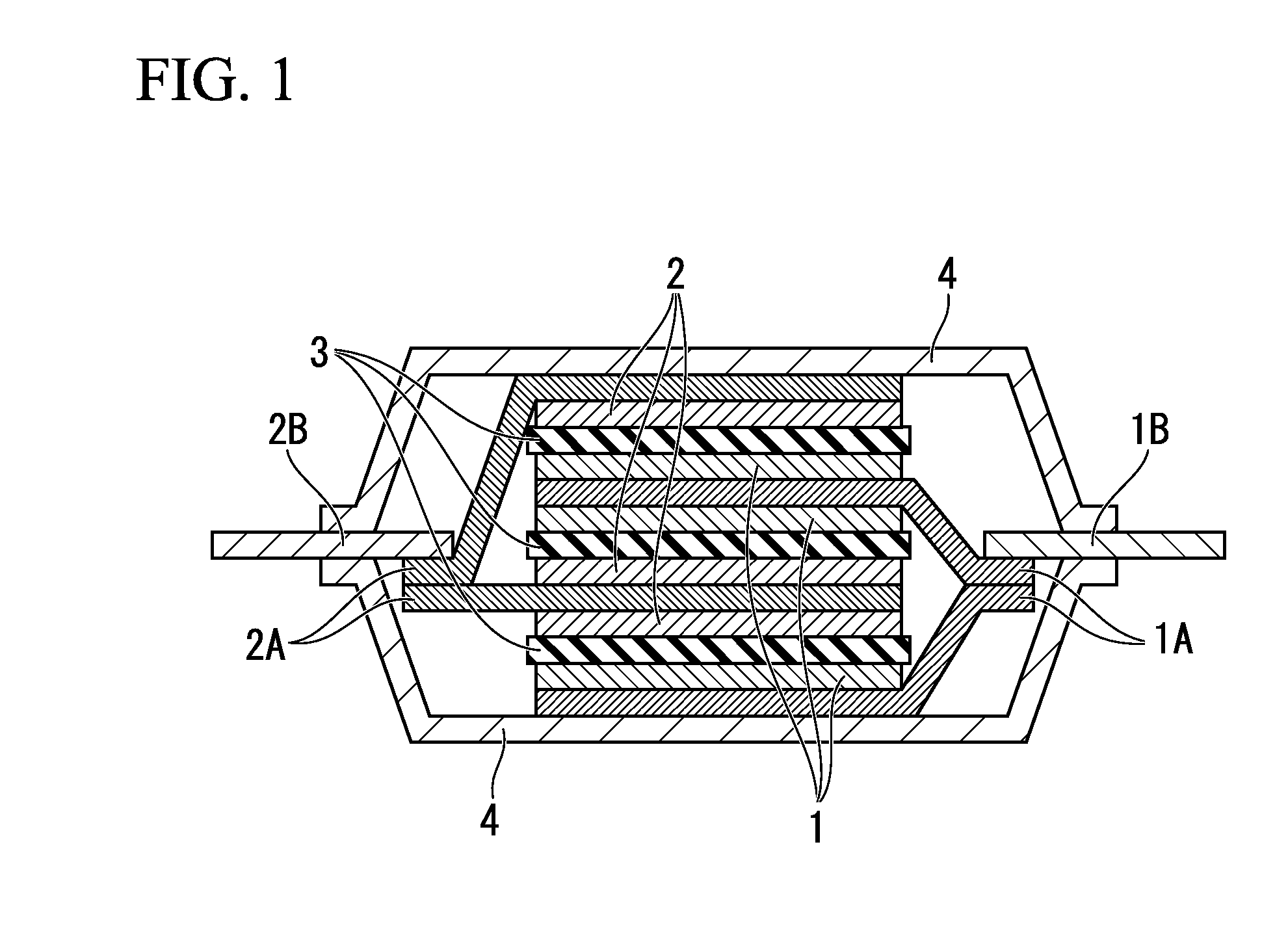Lithium ion secondary battery
a secondary battery and lithium ion technology, applied in the field can solve problems such as battery performance degradation, and achieve the effect of high energy density and suppression of capacity decrease of lithium ion secondary batteries
- Summary
- Abstract
- Description
- Claims
- Application Information
AI Technical Summary
Benefits of technology
Problems solved by technology
Method used
Image
Examples
example 1
Positive Electrode
[0093]A slurry containing 92% by weight of a lithium oxide Li1.136Fe0.16Ni0.151Mn0.475O2 having a layered rock salt structure, 4% by weight of Ketjenblack and 4% by weight of polyvinylidene fluoride was coated on a positive electrode current collector 1A formed of an aluminum foil having a thickness of 20 μm, followed by drying, to produce a positive electrode 1 having a thickness of 175 μm. Similarly, a double-sided electrode was produced, which includes a positive electrode current collector 1A having positive electrodes 1 formed on both sides thereof by the application and drying of the slurry.
[0094]A slurry containing 85% by mass of SiO having an average particle size of 15 μm and 15% by mass of polyamic acid was coated on a negative electrode current collector 2A formed of a copper foil having a thickness of 10 μm, followed by drying, to produce a negative electrode 2 having a thickness of 46 μm. The produced negative electrode was annealed in nitrogen atmosph...
example 2
[0098]A lithium ion secondary battery was produced in the same manner as in Example 1 except that the lithium oxide Li1.136Fe0.16Ni0.151Mn0.475O2 having a layered rock salt structure was replaced with Li1.21Fe0.15Ni0.15Mn0.46O1.99.
example 3
[0099]A lithium ion secondary batter was produced in the same manner as in Example 1 except that a mixed solvent of HFPDFME / EC / DEC=10 / 27 / 63 (volume ratio) was used instead of a mixed solvent of HFPDFME / FEC / DEC=10 / 45 / 45 (volume ratio).
PUM
 Login to View More
Login to View More Abstract
Description
Claims
Application Information
 Login to View More
Login to View More - R&D
- Intellectual Property
- Life Sciences
- Materials
- Tech Scout
- Unparalleled Data Quality
- Higher Quality Content
- 60% Fewer Hallucinations
Browse by: Latest US Patents, China's latest patents, Technical Efficacy Thesaurus, Application Domain, Technology Topic, Popular Technical Reports.
© 2025 PatSnap. All rights reserved.Legal|Privacy policy|Modern Slavery Act Transparency Statement|Sitemap|About US| Contact US: help@patsnap.com



